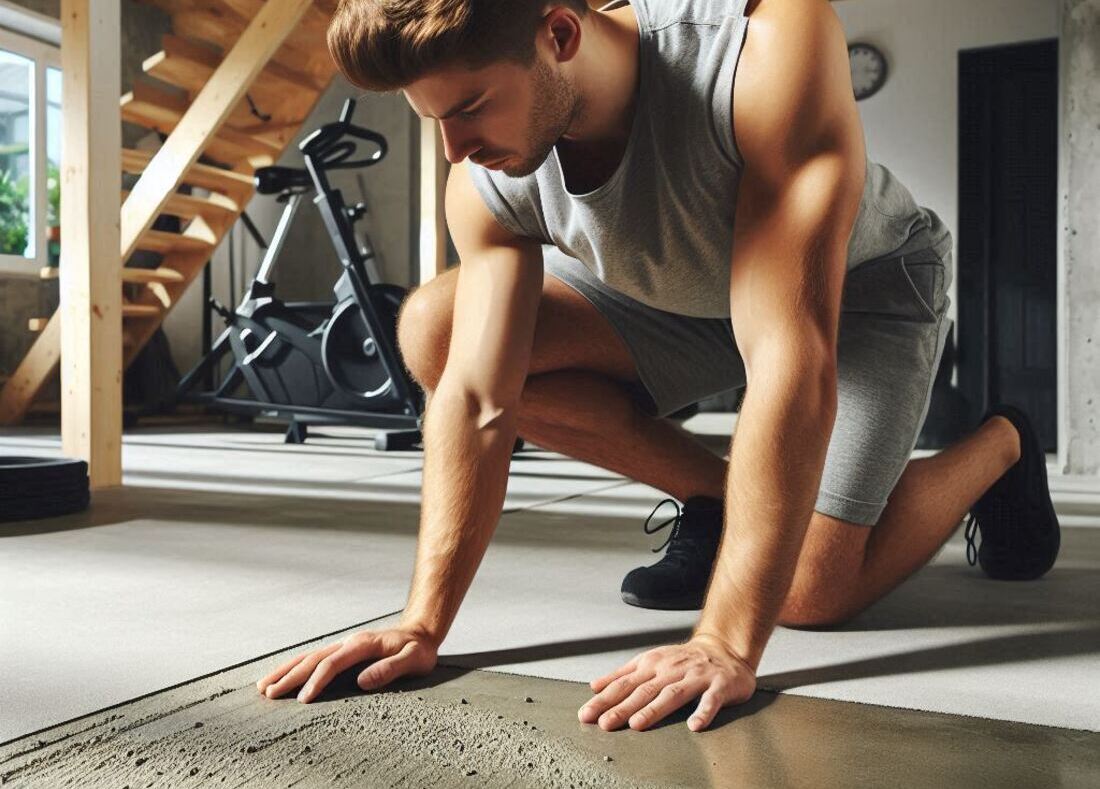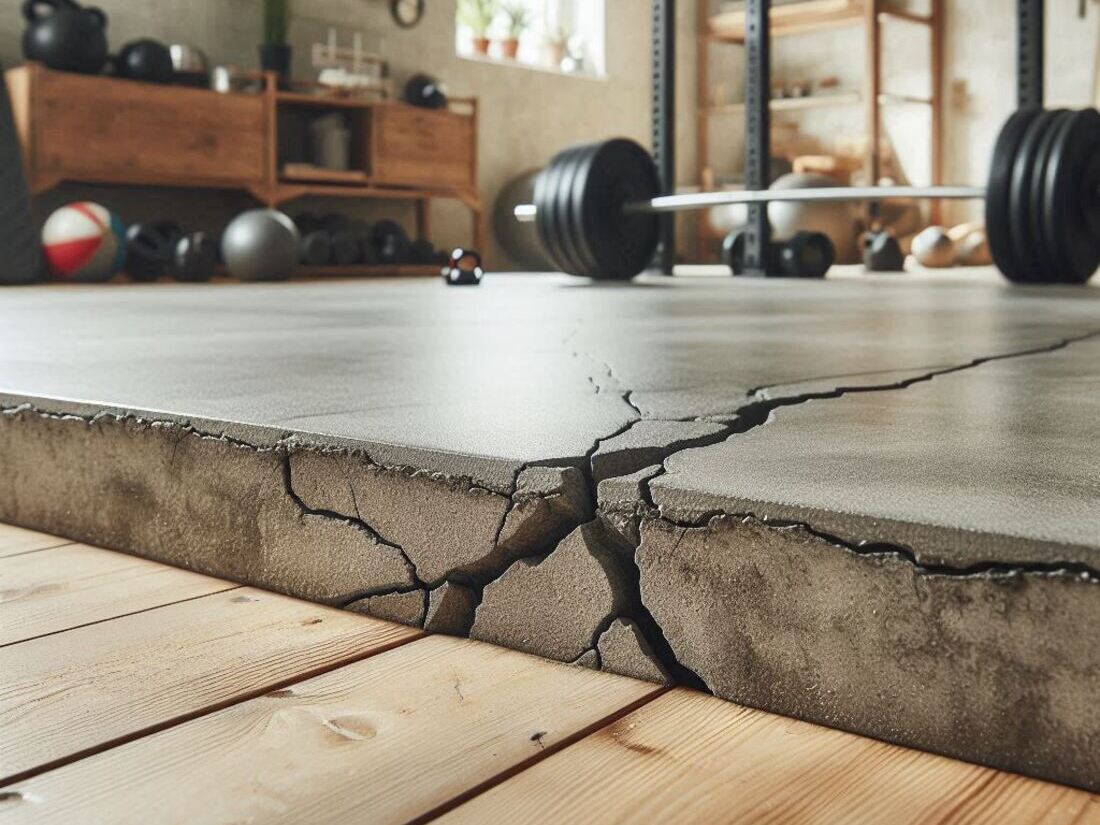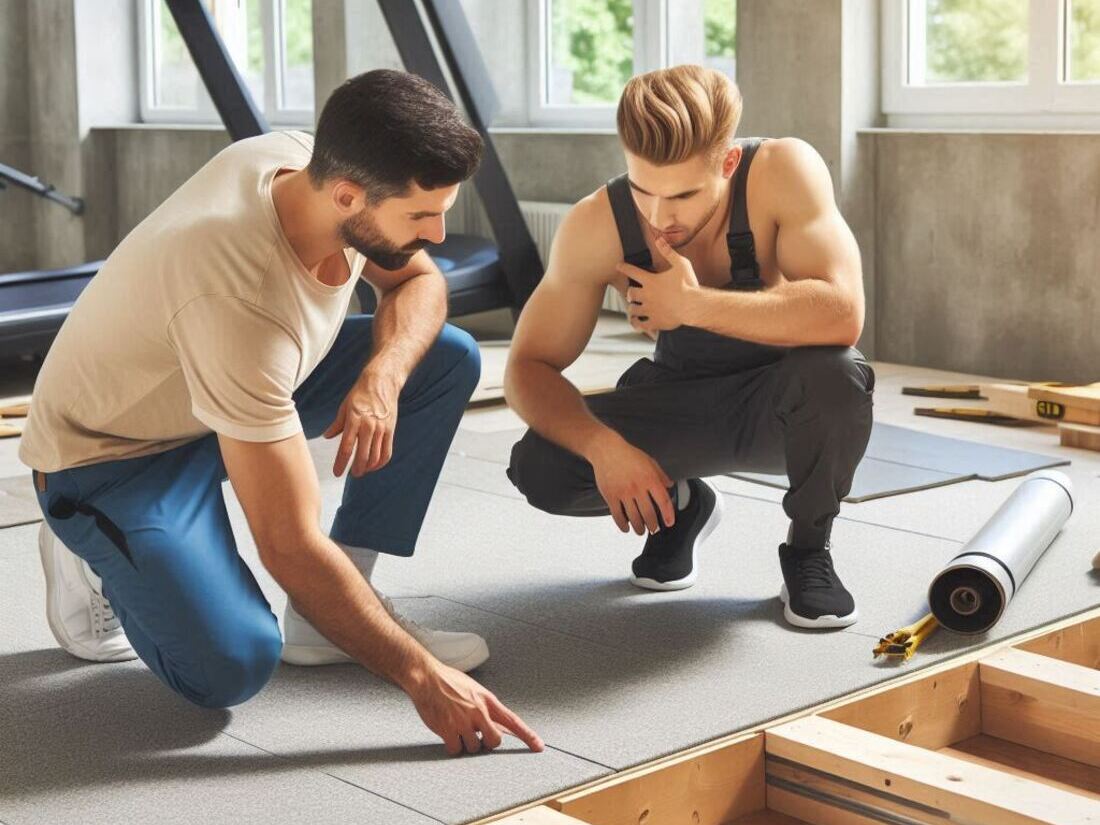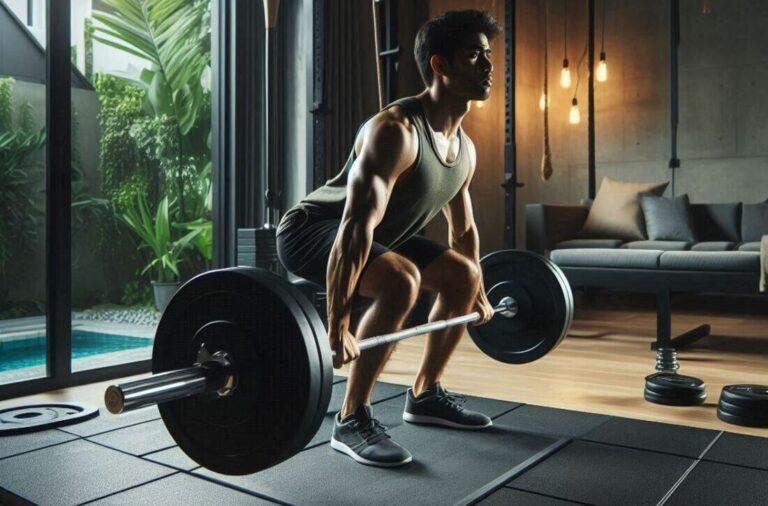You’ve meticulously researched equipment, carved out a dedicated space, and invested in top-notch gym flooring – your home gym is almost complete!
But hold on – before you start loading up on weights and barbells, have you considered the hidden hero beneath your shiny new gym floor, the subfloor?

That’s right, the subfloor, the layer directly below your chosen gym flooring material, plays a crucial role in the overall functionality, safety, and longevity of your home gym.
While it may not be the most glamorous aspect, choosing the right subfloor can make all the difference between a smooth, enjoyable workout experience and costly repairs down the road.
Why is Choosing the Right Subfloor Important for Your Home Gym?
Here are some key reasons why the subfloor is a crucial consideration for your home gym:
- Durability and Support: A strong subfloor ensures your gym flooring can handle the impact of heavy weights, dropped equipment, and vigorous exercise routines. Without proper support, the subfloor can become damaged, leading to uneven floors, cracks, and potential safety hazards.
- Moisture Protection: Subfloors act as a barrier against moisture from the ground below, which can damage your gym flooring, especially materials like wood or plywood. A proper subfloor helps prevent moisture buildup, mold growth, and warped flooring.
- Soundproofing: A quality subfloor can significantly reduce noise transmission, especially for high-impact exercises. This is crucial if your home gym is located on an upper floor or in an apartment building to minimize disturbance to yourself and your neighbors.
- Level Installation: A smooth, level subfloor is essential for proper installation of your gym flooring. Any unevenness in the subfloor can translate to an uneven gym floor surface, which can lead to discomfort, reduced stability, and potential injuries during workouts.
Common Types of Subfloors and Their Suitability for Home Gyms
The suitability of a subfloor for your home gym depends on several factors, including the type of existing subfloor (if any), your workout style, and budget.
Here’s a breakdown of some common subfloor types:
| Subfloor Type | Pros | Cons | Suitability for Home Gyms |
|---|---|---|---|
| Concrete (existing) | Strong, durable, moisture-resistant | May be cold and unforgiving, requires moisture barrier | Suitable for most home gyms, especially weightlifting and high-impact workouts. May require leveling if uneven. |
| Wood Subfloor (existing) | Readily available, easy to repair | May not be strong enough for heavy weights, susceptible to moisture damage | Potentially suitable for low-impact workouts (yoga, Pilates) with additional reinforcement. Not ideal for weightlifting or heavy equipment. |
| Plywood Subfloor (existing or new installation) | Affordable, versatile, can be leveled | May not be strong enough for heavy weights or high-impact activities | Potentially suitable for low-impact workouts with additional reinforcement. Not ideal for weightlifting or heavy equipment. |
| SLC (Self-Leveling Compound) | Creates a smooth, level surface, good for uneven concrete | Requires professional installation, may add to cost | Can be a good option for leveling an existing uneven concrete subfloor before gym flooring installation. |
Key Takeaways on Choosing the Right Subfloor for Your Home Gym
- Consider your workout style: High-impact activities require a strong, durable subfloor like concrete. Lower-impact workouts might allow for existing wood or plywood subfloors with reinforcement.
- Evaluate your existing subfloor: Inspect the condition and type of your existing subfloor before deciding on any modifications.
- Moisture protection is crucial: Ensure your subfloor has adequate moisture protection to prevent damage.
- Leveling is essential: A smooth, level subfloor is necessary for proper gym flooring installation and a safe workout experience.
- Consult a professional (if needed): For complex subfloor repairs, uneven concrete, or new subfloor installation, consider consulting a qualified flooring contractor for expert advice and recommendations.
Common Subfloor Issues and Solutions for Home Gyms

- Uneven Concrete Subfloor: Unevenness can cause your gym floor to be wobbly or uneven, leading to discomfort and safety hazards.
- Solution: For minor unevenness, self-leveling compound (SLC) can be applied to create a smooth surface. For significant unevenness, grinding or mudjacking might be necessary. Consult a professional for advice on the best approach.
- Cracked Concrete Subfloor: Cracks can compromise the structural integrity of the subfloor and allow moisture to seep in.
- Solution: Minor cracks can be filled with epoxy or concrete patching compounds. Extensive cracks might require professional evaluation and repair.
- Moisture Damage: Moisture can cause warping, mold growth, and deterioration of both your subfloor and gym flooring.
- Solution: Inspect your subfloor for any signs of moisture damage. Ensure proper ventilation in your home gym space. For existing moisture problems, a professional evaluation and potential moisture barrier installation might be necessary.
- Squeaky Wood Subfloor: Squeaks can be distracting and indicate loose floorboards.
- Solution: Identify the source of the squeaks and tighten loose nails or screws. In some cases, additional reinforcement with plywood or subfloor strengthening products might be necessary.
FAQs: Frequently Asked Questions About Subfloors for Home Gyms

Q: Can I use carpet as a subfloor for my home gym?
A: Generally, carpet is not recommended as a subfloor for a home gym. It can compress over time, become uneven, and offer poor support for heavy weights or equipment.
Q: Do I need a vapor barrier under my gym floor, even if my subfloor is concrete?
A: While concrete is naturally moisture-resistant, a vapor barrier can be an added precaution, especially in areas with high humidity. Consult a professional for recommendations based on your specific climate and subfloor condition.
Q: How thick should my subfloor be for a home gym?
A: The ideal subfloor thickness depends on the existing subfloor type and your workout style. For most home gyms on concrete subfloors, the existing concrete thickness is sufficient. If installing a new subfloor like plywood, a minimum thickness of ¾ inch is generally recommended.
Additional Tips for a Perfect Home Gym Subfloor
- Conduct a thorough inspection: Before installing your gym flooring, take the time to inspect your subfloor for any damage, unevenness, or moisture issues. Address any problems before proceeding.
- Consider professional help: For complex subfloor repairs or installations, don’t hesitate to seek advice from a qualified flooring contractor. They can assess your specific situation and recommend the best course of action.
- Plan for the future: If you anticipate using your home gym for high-impact activities or heavy weights in the future, choose a subfloor that can handle the demands.
Conclusion: Building a Strong Foundation for Your Home Gym
By giving proper attention to your home gym’s subfloor, you’re laying the groundwork for a safe, functional, and enjoyable workout environment.
Remember, the subfloor is the hidden hero that provides the support and stability needed for your gym flooring to perform optimally.
Choose the right subfloor, address any underlying issues, and enjoy the peace of mind that comes with a well-constructed home gym foundation.
Citation
National Floor Covering Association
International Association of Certified Home Inspectors
National Tile Contractors Association
Affiliate Marketing Disclosure: This blog post may contain affiliate links to products mentioned throughout the content. By clicking these links and making a purchase, we may receive a commission at no additional cost to you. However, our primary focus remains on providing informative and valuable content to our readers.


